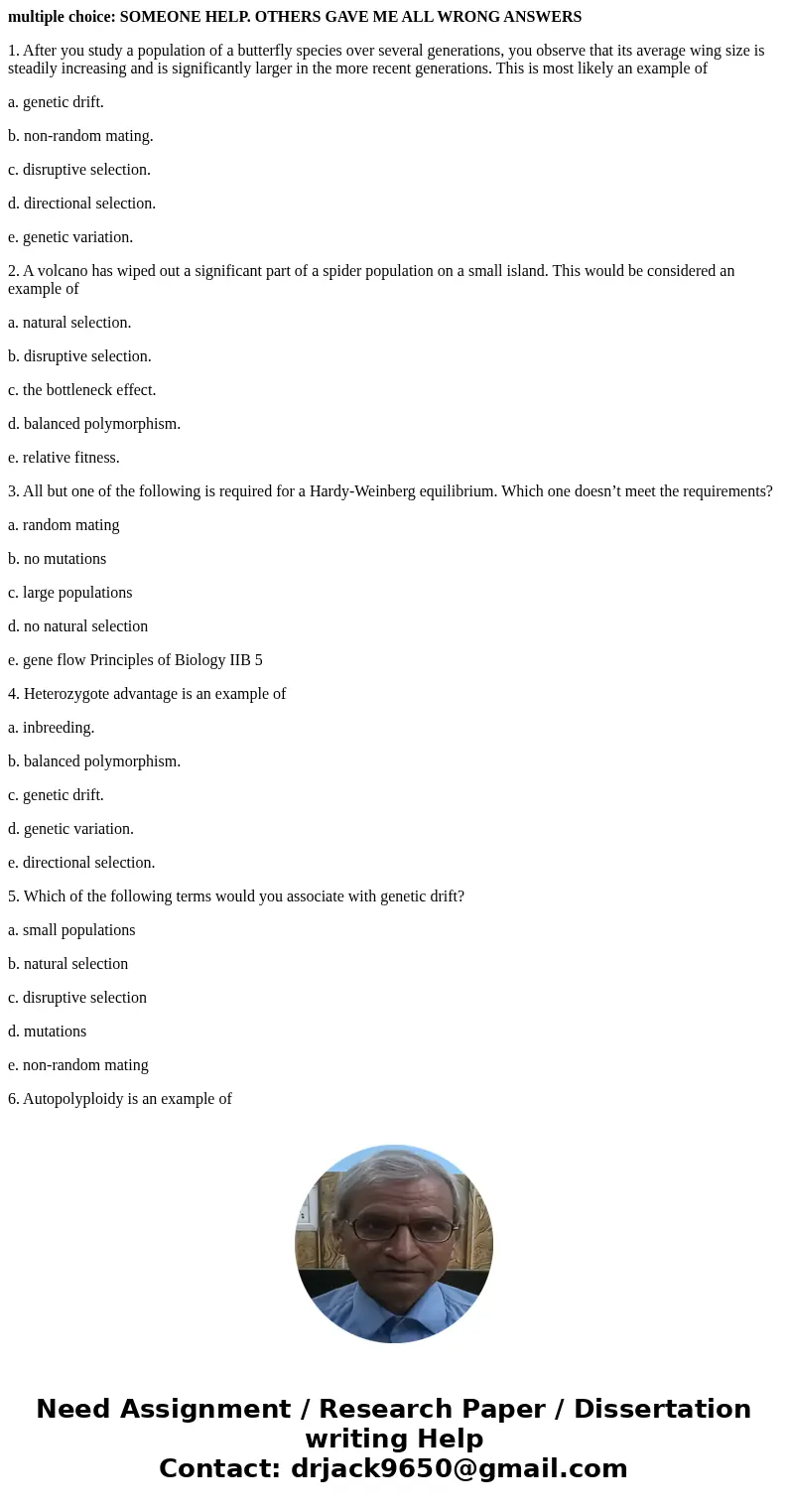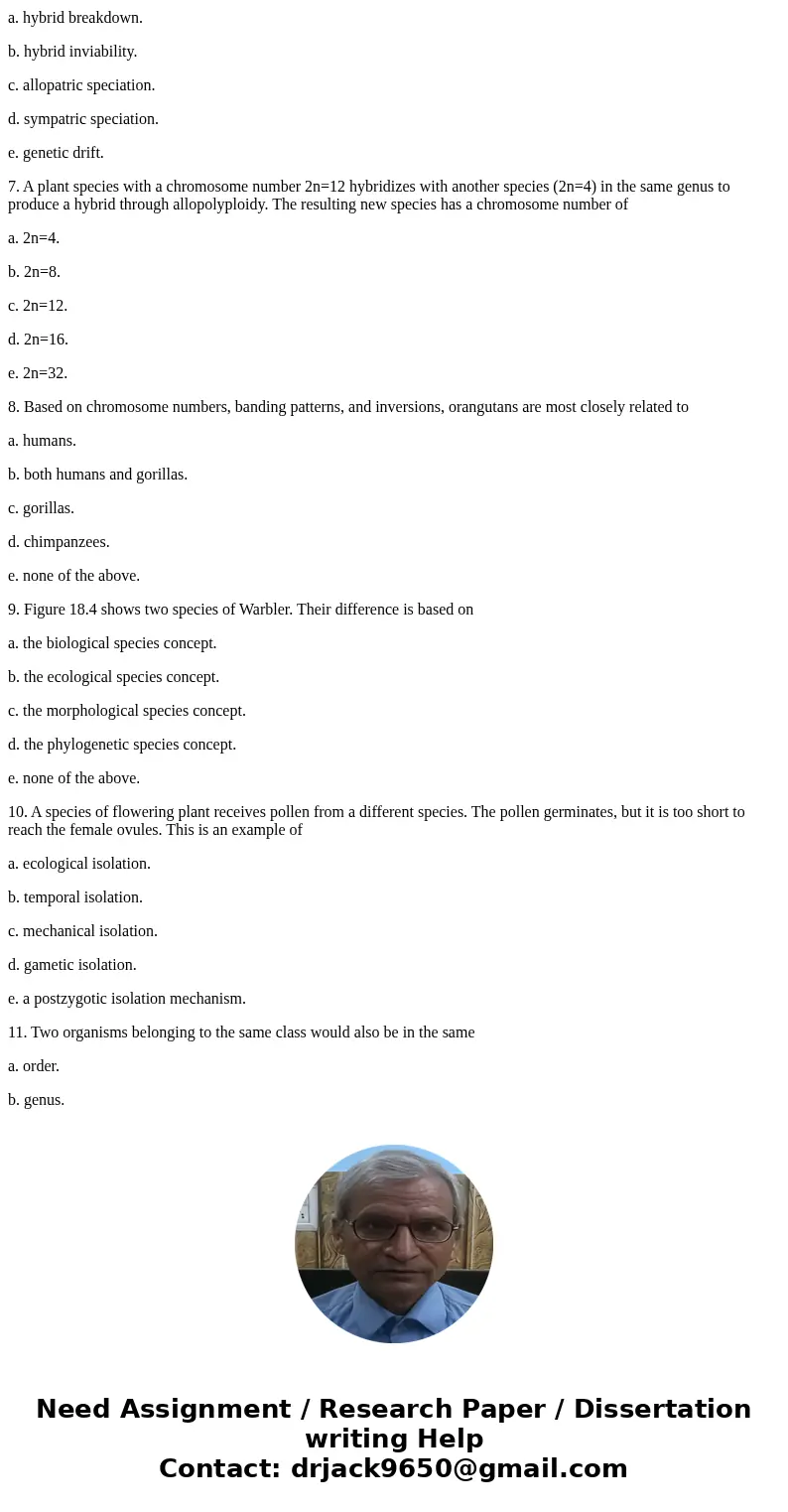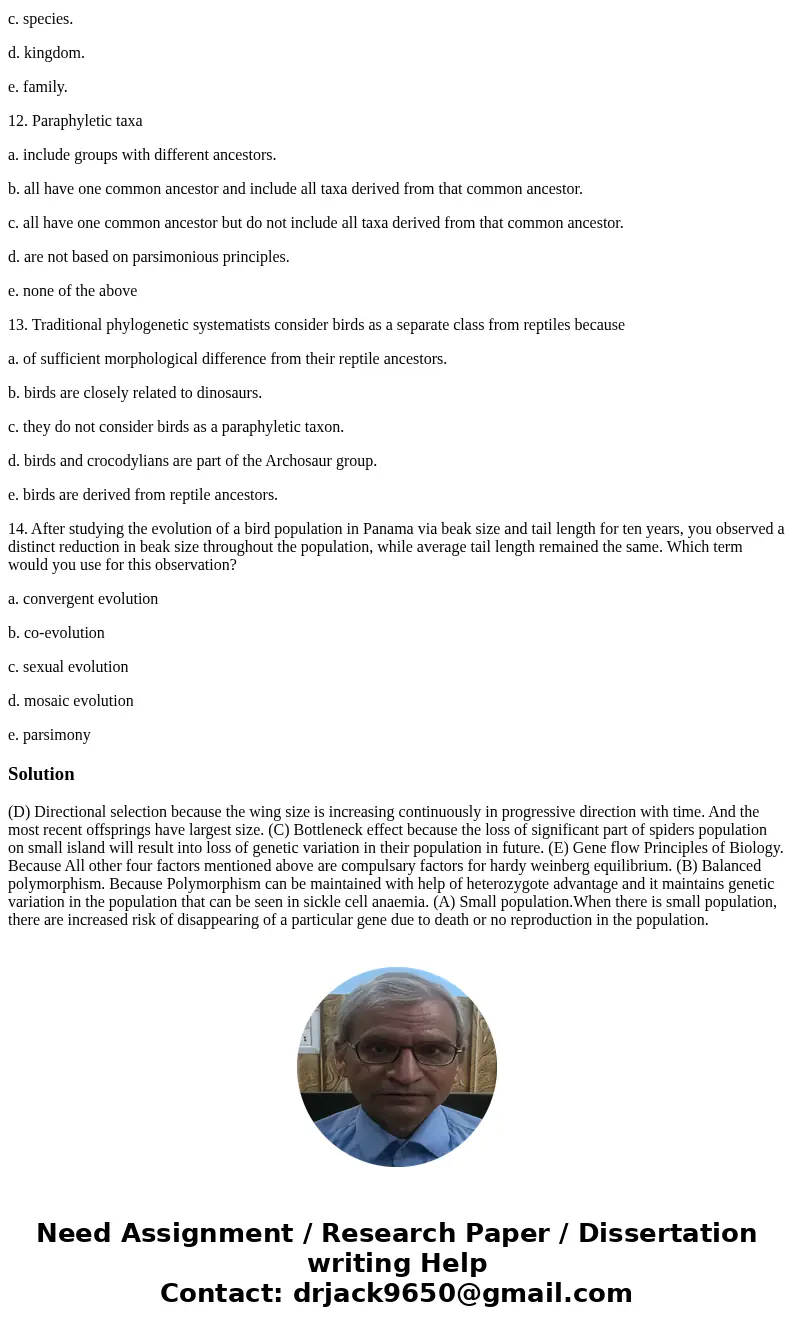multiple choice SOMEONE HELP OTHERS GAVE ME ALL WRONG ANSWER
multiple choice: SOMEONE HELP. OTHERS GAVE ME ALL WRONG ANSWERS
1. After you study a population of a butterfly species over several generations, you observe that its average wing size is steadily increasing and is significantly larger in the more recent generations. This is most likely an example of
a. genetic drift.
b. non-random mating.
c. disruptive selection.
d. directional selection.
e. genetic variation.
2. A volcano has wiped out a significant part of a spider population on a small island. This would be considered an example of
a. natural selection.
b. disruptive selection.
c. the bottleneck effect.
d. balanced polymorphism.
e. relative fitness.
3. All but one of the following is required for a Hardy-Weinberg equilibrium. Which one doesn’t meet the requirements?
a. random mating
b. no mutations
c. large populations
d. no natural selection
e. gene flow Principles of Biology IIB 5
4. Heterozygote advantage is an example of
a. inbreeding.
b. balanced polymorphism.
c. genetic drift.
d. genetic variation.
e. directional selection.
5. Which of the following terms would you associate with genetic drift?
a. small populations
b. natural selection
c. disruptive selection
d. mutations
e. non-random mating
6. Autopolyploidy is an example of
a. hybrid breakdown.
b. hybrid inviability.
c. allopatric speciation.
d. sympatric speciation.
e. genetic drift.
7. A plant species with a chromosome number 2n=12 hybridizes with another species (2n=4) in the same genus to produce a hybrid through allopolyploidy. The resulting new species has a chromosome number of
a. 2n=4.
b. 2n=8.
c. 2n=12.
d. 2n=16.
e. 2n=32.
8. Based on chromosome numbers, banding patterns, and inversions, orangutans are most closely related to
a. humans.
b. both humans and gorillas.
c. gorillas.
d. chimpanzees.
e. none of the above.
9. Figure 18.4 shows two species of Warbler. Their difference is based on
a. the biological species concept.
b. the ecological species concept.
c. the morphological species concept.
d. the phylogenetic species concept.
e. none of the above.
10. A species of flowering plant receives pollen from a different species. The pollen germinates, but it is too short to reach the female ovules. This is an example of
a. ecological isolation.
b. temporal isolation.
c. mechanical isolation.
d. gametic isolation.
e. a postzygotic isolation mechanism.
11. Two organisms belonging to the same class would also be in the same
a. order.
b. genus.
c. species.
d. kingdom.
e. family.
12. Paraphyletic taxa
a. include groups with different ancestors.
b. all have one common ancestor and include all taxa derived from that common ancestor.
c. all have one common ancestor but do not include all taxa derived from that common ancestor.
d. are not based on parsimonious principles.
e. none of the above
13. Traditional phylogenetic systematists consider birds as a separate class from reptiles because
a. of sufficient morphological difference from their reptile ancestors.
b. birds are closely related to dinosaurs.
c. they do not consider birds as a paraphyletic taxon.
d. birds and crocodylians are part of the Archosaur group.
e. birds are derived from reptile ancestors.
14. After studying the evolution of a bird population in Panama via beak size and tail length for ten years, you observed a distinct reduction in beak size throughout the population, while average tail length remained the same. Which term would you use for this observation?
a. convergent evolution
b. co-evolution
c. sexual evolution
d. mosaic evolution
e. parsimony
Solution
(D) Directional selection because the wing size is increasing continuously in progressive direction with time. And the most recent offsprings have largest size. (C) Bottleneck effect because the loss of significant part of spiders population on small island will result into loss of genetic variation in their population in future. (E) Gene flow Principles of Biology. Because All other four factors mentioned above are compulsary factors for hardy weinberg equilibrium. (B) Balanced polymorphism. Because Polymorphism can be maintained with help of heterozygote advantage and it maintains genetic variation in the population that can be seen in sickle cell anaemia. (A) Small population.When there is small population, there are increased risk of disappearing of a particular gene due to death or no reproduction in the population.


 Homework Sourse
Homework Sourse